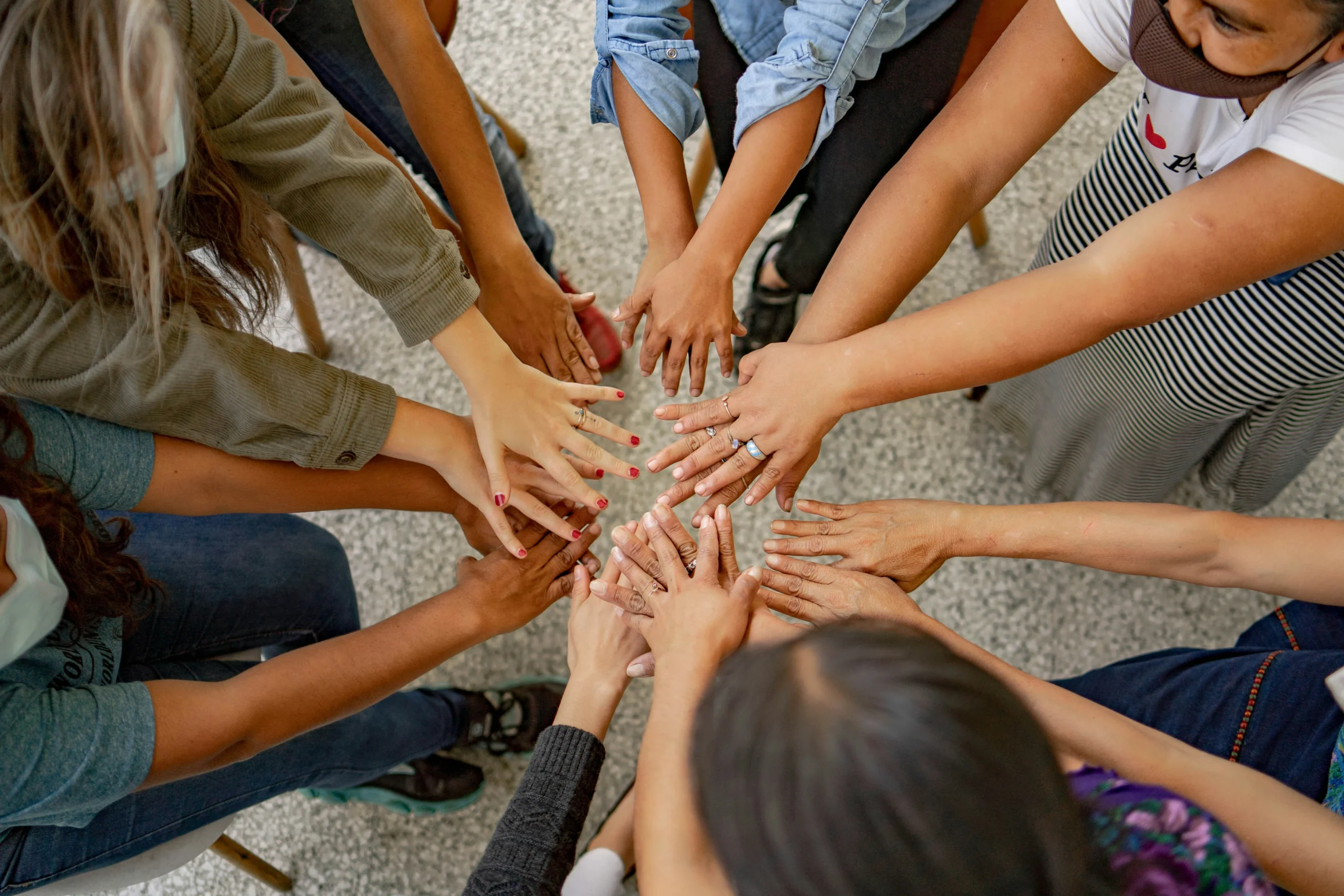4 Practical Ways to Help in a Disaster
By John Hawthorne
It’s a frighteningly common occurrence: as you scroll through your social feeds or watch the news, you hear of another disaster happening around the world. A hurricane in the Philippines, an earthquake in Nepal, a tsunami in Thailand. It’s sad. Grievous. Heartbreaking. And tremendously frustrating.
You desperately want to do something to help. To alleviate the pain and suffering. To make an actual difference in the world. But as you watch the footage and see the pictures, you feel so helpless. You want to take action but you don’t know what to do. You feel hamstrung. Stuck.
We understand your predicament, which is why we’ve put this post together. We’re going to give you 4 practical ways you can get involved when a disaster strikes. These ideas range from high time, high commitment ideas to less involved solutions. No matter what your age or ability, there is always some way to help.
Daryn Kagan said, “Bad things do happen in the world, like war, natural disasters, disease. But out of those situations always arise stories of ordinary people doing extraordinary things.”
You can be an ordinary person doing extraordinary things. Here’s how to get started.
1. Volunteer Your Time
You may not be able to donate money, but you can always donate your time. Relief organizations are always desperate for volunteers, and when a disaster strikes, there are often too few boots on the ground.
You may not be able to donate money, but you can always donate your time. Relief organizations are always desperate for volunteers, and when a disaster strikes, there are often too few boots on the ground.

In terms of ways to volunteer, the possibilities are almost unlimited. Some ideas include:
- Collecting supplies that can be distributed to those who have been affected and those who are working to create a solution.
- Lobbying community leaders and businesses to support the relief effort. This can be done both in person and through other means like email and social media.
- Organizing a benefit dinner or event (think concert, comedy show, etc.).
- Rallying local religious communities to support the relief effort. Many churches, synagogues, mosques, and other religious organizations will be more than happy to donate time, money, or supplies.
When it comes to specific organizations to volunteer with, here are a few options:
Red Cross:
- 90% of the Red Cross are volunteers, meaning that when a disaster strikes, they depend heavily on volunteers to come to the aid of those in distress.
- They have a wide range of volunteer opportunities in different areas, and you can browse your location for opportunities here.
- They may have positions possibly related to your area of expertise, for example: Administrative specialist, media relations, office assistant, donor experience lead, disaster services lead, real estate transaction assistant, etc. This allows you to utilize your specific skills during times of crisis.

Samaritan’s Purse:
- This Christian organization partners with churches in communities and works together to “share the love of Jesus Christ with people facing grief and uncertainty.”
- As noted on their website, Samaritan’s Purse, “…mobilizes staff and equipment and enlists thousands of volunteers to provide emergency aid to victims of tornadoes, hurricanes, wildfires, floods, and other natural disasters in the U.S.”
- They sometimes rebuild or restore houses for needy families.
- Some of their current projects include: repairing and restoring homes damaged by June 2016 flooding in West Virginia, restoring and repairing homes damaged by August 2016 flooding in Louisiana, and helping restore StraightWay Training Center, a faith based drug and alcohol rehab center in Texas.
UNICEF
- UNICEF responds to more than 250 emergencies-from conflicts to natural disasters every year.
- Volunteers educate, advocate and fundraise on behalf of UNICEF in their communities.
- You can host a fundraiser or event to raise money for UNICEF.
Salvation Army
- This Christian, faith-based organization responds to numerous natural disasters, transportation accidents, civil unrest situations, and terrorist attacks.
- They offer disaster training programs to help individuals and communities prepare for emergency events.
- They provide food services, which include offering meals, snacks and drinks to rescue workers and survivors.
- They provide emotional and spiritual care to those affected by a disaster.
Volunteering is a hugely important way to get involved and make a difference during times of crisis. Non-profits don’t have the finances to maintain a fully staffed disaster team, making volunteers a critical part of their mission success.
Donate Your Money
One of the fastest, most practical ways to make a difference in a time of need is simply by donating money. Financial aid allows relief organizations to quickly get people on the ground and get supplies to those who desperately need them.

Additionally, giving financially allows relief organizations to funnel the resources toward what is needed most, whether that’s food, machinery, medicine, or equipment. One thing that’s important when giving finances to relief efforts: only give money to trusted organizations who will use the resources wisely. Unfortunately, fraudulent charities are a real thing. They take advantage of the pain of others to make a profit for themselves.
As Ryan Scott wrote in Forbes:
In the aftermath of Hurricane Katrina, the American Red Cross asked the FBI to investigate at least 15 fake websites that were designed to look like legitimate Red Cross appeals for donations. Even before Katrina hit, internet fraud experts saw scammers registering dozens of websites with Katrina in their names. After Hurricane Sandy, one charity calling itself the Hurricane Sandy Relief Effort raised $600k for storm victims, but it was all actually a ploy to help a couple of con artists with their own credit card relief.
These kinds of people give disaster relief a bad name and take resources away from those who legitimately need them.
In light of this, only give to organizations who are reputable.
- The Red Cross accepts donations on their website, as well as by text, email, and a host of other methods. You can also give blood at the Red Cross.
- You can become a monthly donor to UNICEF and provide children with lifesaving vaccines and insecticide-treated bed nets, emergency relief after natural disasters, educational opportunities, and more.
- The Salvation Army accepts donations of goods and supplies and money. They ask that you check with your local Salvation Army to confirm the need after the disaster. Rarely are clothing, cars and furniture needed for disaster relief, but those donations help support the day-to-day of the Salvation Army.
Giving a small portion of your income to those in need can have an exponential effect. Lifesaving supplies can be given to those affected by tragedy, allowing you to play a key role in lessening the pain and suffering.

3. Advocate and Raise Awareness
When disaster strikes, a simple way to get involved is to advocate for change and raise awareness. For example, through the UNICEF website, you can support legislative advocacy for children’s rights. You can also sign various petitions on the website Change.org, like this one to intervene on behalf of children in Aleppo.
Another simple way to make a difference is to raise awareness. Most people are simply in the dark in terms of how they can help when disaster strikes. You can inform and educate people through social media, community involvement, and charity events.
4. Get Paid to Help
FEMA (Federal Emergency Management Agency) is a federal agency that provides “financial assistance and, if necessary, direct services to eligible individuals and households who, as a direct result of a major disaster, have necessary expenses and serious needs and are unable to meet such expenses or needs through other means.”
If you want to make disaster relief a bigger part of your life, you can actually become a reservist for FEMA. Reservists assist disaster survivors and have the opportunity to travel, receive training, and build a professional network. They are appointed for a 2-year period and are the main FEMA workforce during an emergency or disaster that assists the agency in accomplishing its mission.
This probably can’t be your full time job due to the intermittent nature of disasters, but it does provide a way for you to get more closely integrated into aid work. You can learn more about becoming a reservist here.

A Few Things to Consider
When choosing how to help in times of disaster, here are a few things to consider.
How much time do you have? Obviously, the more time you have the more involved your relief efforts can be. If you are strapped for time, you can donate money, sign petitions, and raise awareness. If you have the bandwidth to be more involved, you can become a reservist or volunteer.
How much stamina do you have? Disaster relief work is both emotionally and physically taxing. Those who volunteer need more stamina and energy than those who donate or raise awareness.
Are you physically prepared? If you’re going to volunteer on location at a disaster, you need to be physically ready. Traveling is exhausting, disease and sickness are prevalent, and you may need to update your immunizations. Physical preparedness is crucial when volunteering on location, and a lack of it can actually be harmful to you.
To be clear, all types of relief are helpful, whether it’s volunteering or donating cash. You simply need to choose the one that is the best fit for who you are.
All We Have is Each Other
Marsha Blackburn said, “In this dangerous world that we live in, where hatred and violence and natural disasters sometimes collide to almost overwhelm us, we each can help in some way.”
Yes, we all truly can help each other in some way, and when disaster strikes, it’s crucial that all of us work together.
Don’t think that you have no power to make a difference. By simply getting involved, you can transform lives and relieve suffering.
On this page
Have a story to share in the world of water, sanitation, and hygiene? Connect with our media team today!
Share Your Story



